Elder is a native shrub or tree found across the UK, growing in hedgerows, woodland and waste land. Elder trees can live up to 60 years in age, and grow to a height of 15 metres.
Its flowers are used by pollinating insects, its berries eaten by birds and mammals such as dormice, rabbits and badgers, and its leaves by moth caterpillars such as white-spotted pug, swallowtail, dot moth and buff ermine.
Elder is a popular plant for foragers as its flowers can be fried to make fritters, or used to make as cordial and gin, and its berries can be cooked and used in vinegars, jams and fruit pies.
What is the scientific name of elder?
The scientific name of common elder is Sambucus nigra. The specific epithet ‘nigra’ means black, and refers to the dark berries that the tree bears late in summer.
It belongs to the Adoxaceae family (having been reclassified from the Caprifoliaceae family).
How to identify elder, elderflowers, and elderberries
Elder is a perennial deciduous shrub or small tree (according to habitat), that is usually quite easy to identify when in flower in late spring to midsummer or when bearing berries in late summer and early autumn.
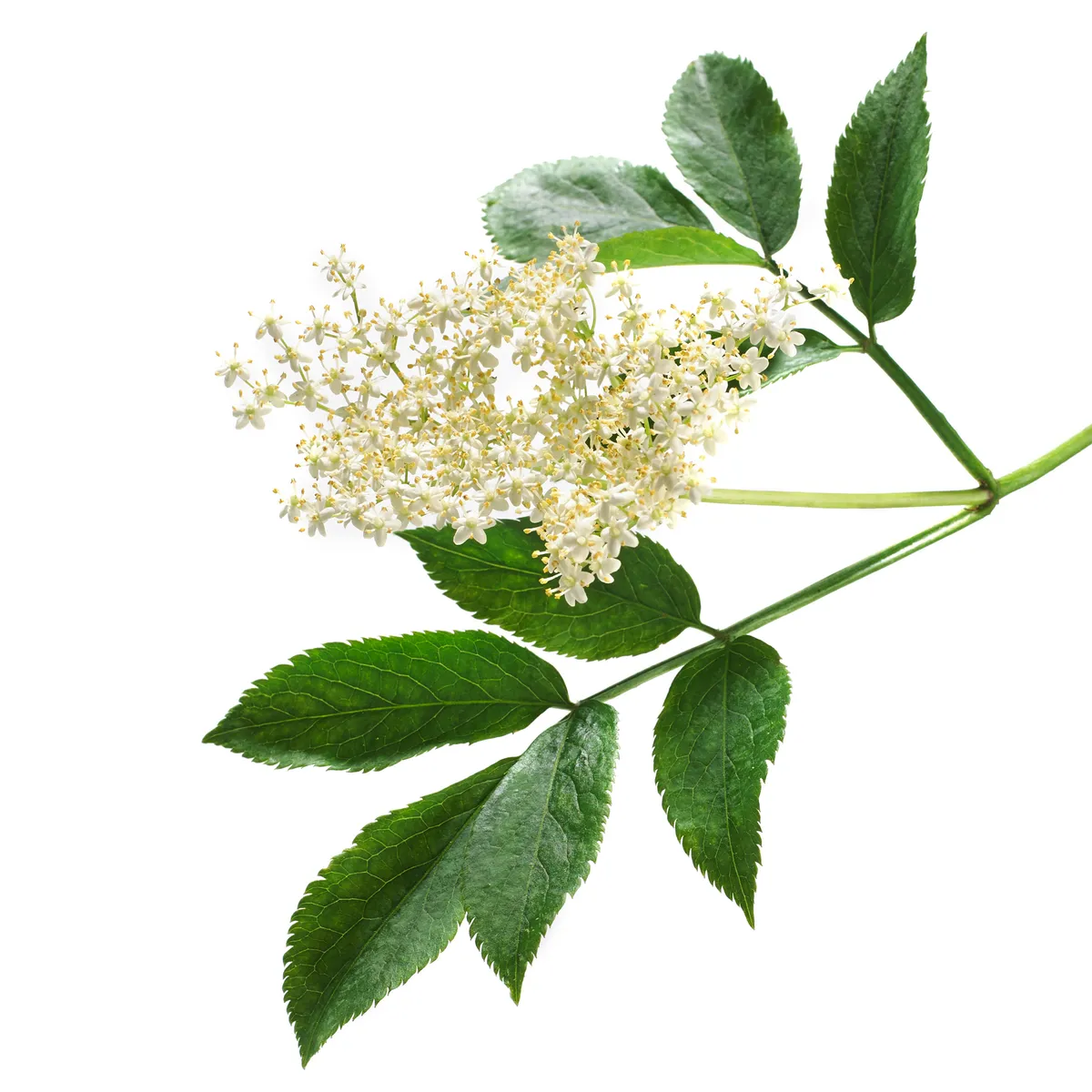
It bears compound leaves with between five and seven pairs of leaflets, which are pointed, smooth and toothed. The leaves can smell unpleasant when touched or bruised.
The flowers are creamy-white in colour, with five rounded petals and prominent stamens, borne in a rounded or flat-topped showy clusters called umbels which can measure between 10-30cm across.
Elder is a hermaphrodite, with the flowers containing both the male and female reproductive parts.
In midsummer the elder comes into her own. From the depths of her dark leaves and craggy limbs appear great panicles of scented blossom. They cover the tree like white plates and their heady fragrance drenches the warm evenings as you walk past in the lanes in the long late sunlight of high summer. … Elder is the crown of the hedgerow flowers, the last to blossom after all the thorns.
– Du Cann (2012)
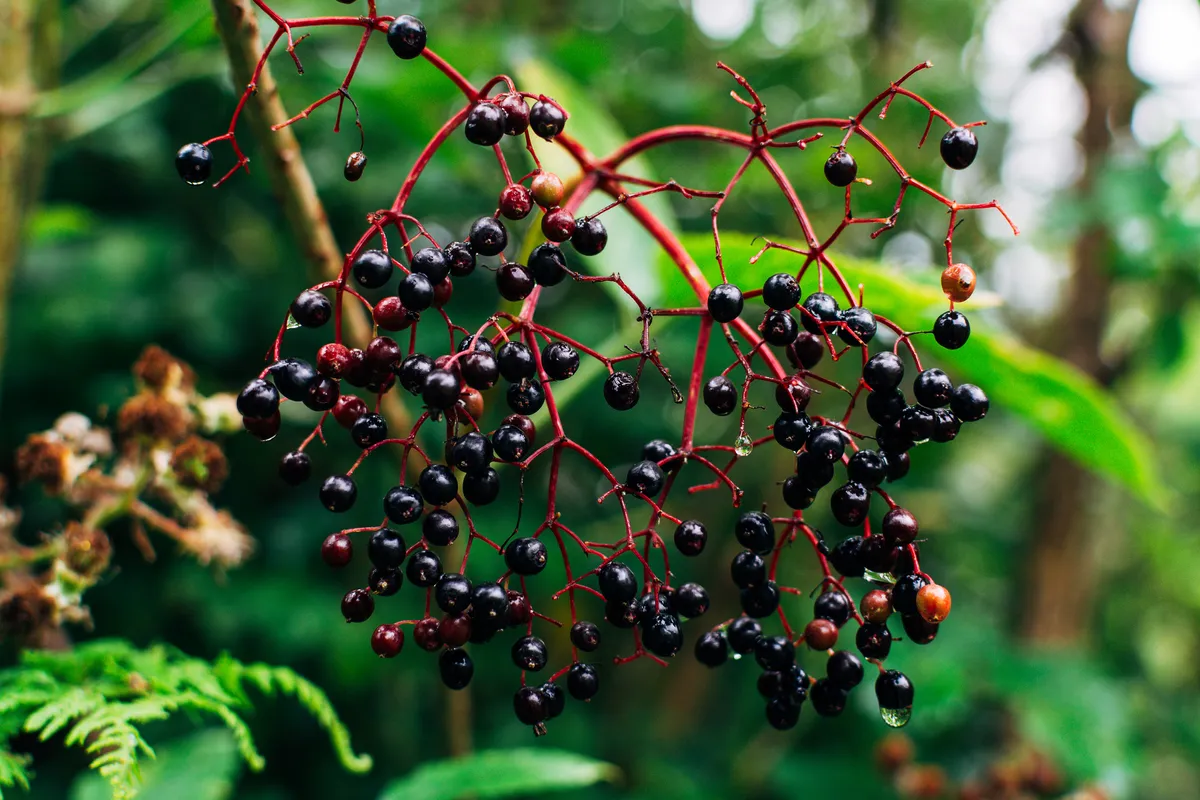
The fruits of the elder tree are called elderberries. When ripe, they are deep purple and each berry contains three seeds.
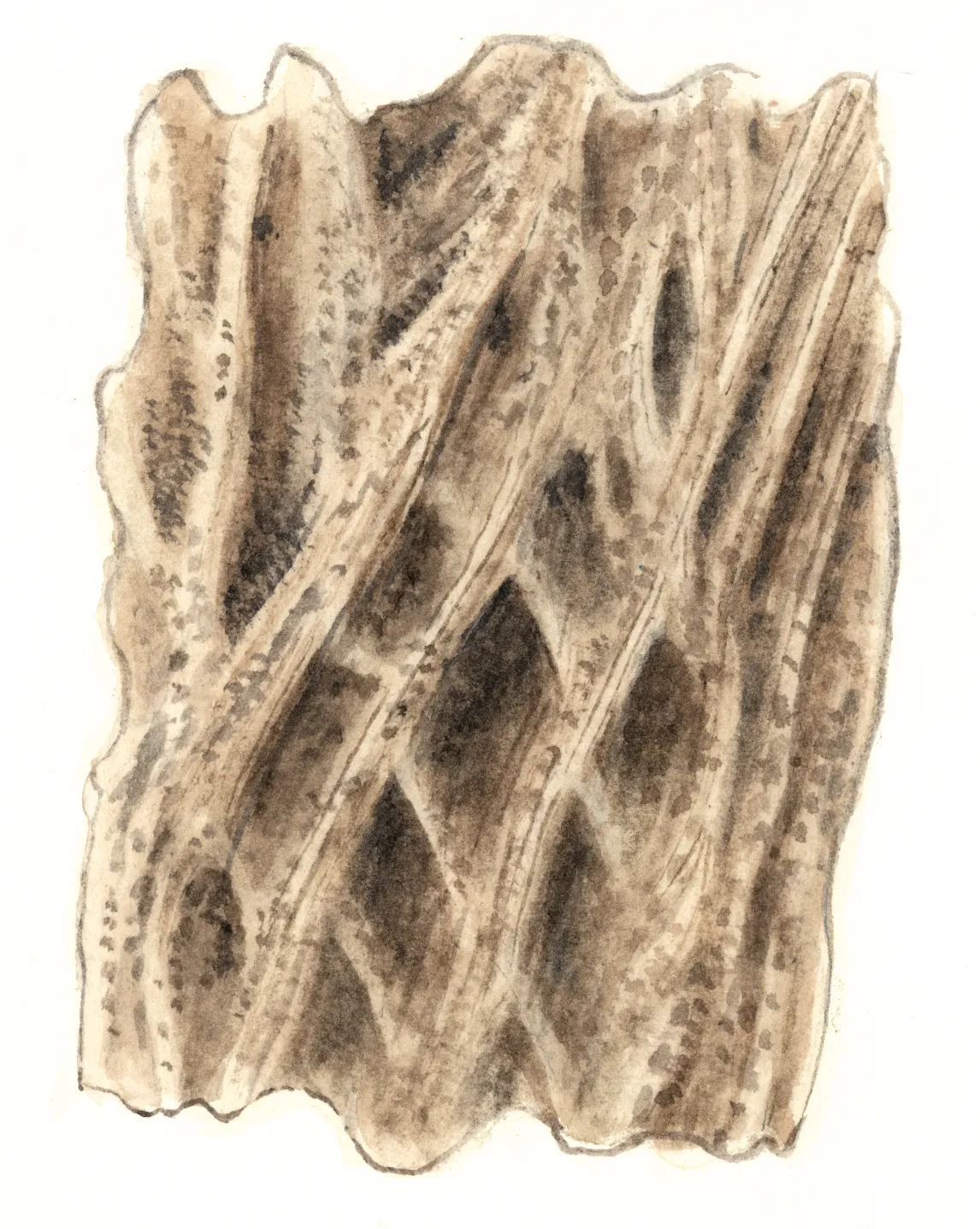
The bark of elder is greyish-brown, crossed with deep, corky ridges.
Cautions: do not ingest the leaves and stems, or eat the berries raw. The raw seeds contain cyanogenic glycosides.
Is elder a weed?
Elder is a deciduous perennial shrub-tree – it can grow to 10m (33 ft) or more when left undisturbed in semi-shade and in a nitrogenous soil, but survives as a man-size shrub in poorer ground or when suffering wind exposure.
It is, these days at least, often considered a weed, to be removed by chainsaw, whereas once it was a sacred tree, Mother Elder.
The classic textbook on weeds by Salisbury (1961) offers two reasons for elder’s weedness (as we term it): early, unnoticed growth in winter and speed of shoot development in spring, leading to elder’s destructive shading.
In our minds, elder only makes us notice it for six months, from about April to October in Britain and North America, when it is a showstopper, with its panicles of extravagant creamy, fragrant blossoms followed by succulent blue-black fruit.
In winter, though, elder is dishevelled, stark, algae-covered. It is, in the words of plant-journeyer Charlotte Du Cann (2012) “Bony, scraggly, ghost-branched, broken-headed. She [elder] is at the end of things, and yet, even in the coldest month, in the winter’s depth, small dark-red leaves are sprouting…”
The history and folklore of elder
Elder accompanied man as he settled the post-glacial world. Like nettle, elder proliferates where human waste provides it with the nitrogen-rich earth it likes, but it can equally manage without us, as it does near rabbit warrens and badger setts.
Elder spreads mainly by animals and birds swallowing its fruit and excreting the seeds in a new habitat. In addition to suppressing nearby competing plants it has a suckering habit, but lacks aggressive rhizomes.
One early interaction with man arose from the hollowness of elder’s stems, which are filled with a spongy pith. A Greek legend has it that Prometheus stole fire from the gods on Mount Olympus and carried the hot coals in an elder stem.
Later, the hollow stems were used as pipes to fan flames. Later still, the Anglo-Saxons gave their name for fire, aeld, to elder, perhaps because the pith could be dried as tinder. Elder, however, has never made desirable firewood as its damp core spits and screams – the Devil at work, some say.
Air is another elemental human connection with elder. Finger holes could be pierced in the easily hollowed-out stems to make flutes, whistles or pipes. Indeed, the genus name Sambucus was given to elder by the Roman naturalist Pliny the Elder (an appropriate name!) in the first century AD, referencing the flute called a sambuca made from elder stems.
Continuing with former names in remembering ancient wisdoms, Hylde Moer, Mother Elder, was a Scandinavian guardian, sometimes known in English folklore as Old Lady or Old Girl.
It was good fortune if elder planted herself in your backyard (rowan was better in the front), meaning that the Mother had chosen to protect your house, family and animals against witchcraft and unnamed terrors.
It also meant you should pay respects to the elder, never cutting or burning it without praying to the Mother first. Here was elder as sacred tree.
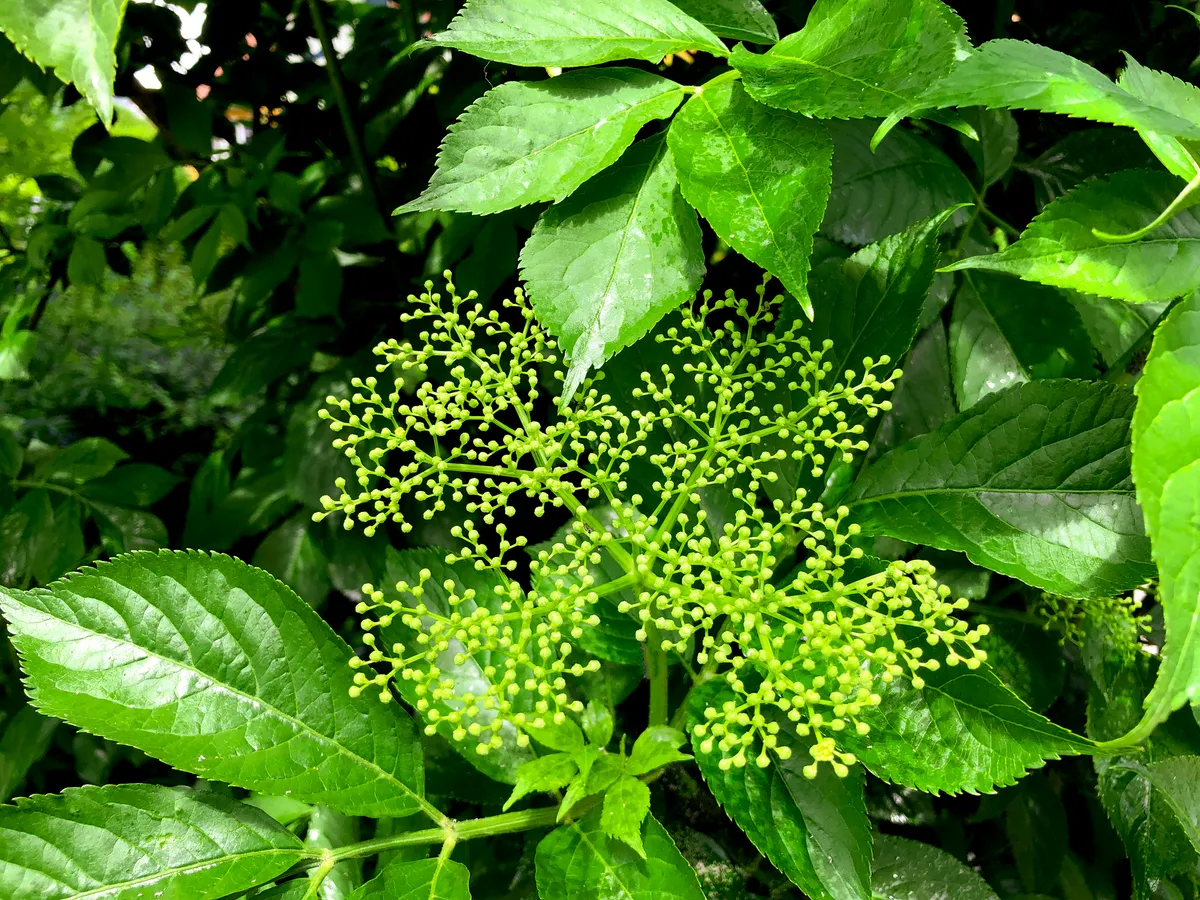
The old countryman’s belief that elders stunt and poison their neighbours, leading to gaps in the hedge that stock can get through, may originate from the “exceptional rapidity” (Salisbury) of elder in spring. By April the shoots and leaves are full of vigour – the shoots can put on over 2m (7ft) a year. This causes a shade problem for adjacent shrubs in the hedgerow and garden, and they sometimes fail and die.
But there’s also a far older Christian myth that elder was the tree of Christ’s crucifixion and also where Judas Iscariot hanged himself. The sign of God’s displeasure was the twisting of elder’s branches and the miniaturisation of the fruit.
In other words, the tree was accursed and to be shunned, the worst of weeds.
It all stretches credulity, to be honest. Elder is simply not good at weightbearing, its brittle stems capable of supporting its large clusters of blossoms or fruits, but not strong enough to be used as a wood.
One student of ours found that he could make sturdy beads from elder stems, and dye them with the berries (for violet and purple), the leaves (yellow) or the bark (grey and black). He was doing what the crofters did, in dyeing the colours of Harris Tweed. We explore these transforming identities, along with others: elder as successful commercial crop, domestic medicine and source of wonderful summer drinks and autumnal puddings and savoury beans.
Herbal and other uses of elder
Elder has another, modern identity, that of a commercially successful product. It is one of the few ‘weeds’ covered in our book to be grown and harvested for profit in Britain, and is a popular plant for foragers.

In England the public has an unquenchable thirst for elderflower cordial and champagne; in North America the berries are in demand, made into jams, jellies and syrups.
The first large British producer of modern times was Belvoir Fruit Farms, in the east Midlands; starting in 1984 with 1,000 bottles of cordial, by 2015 their output was 1.5 million bottles, and growing.
In the US, figures from 2019 indicated a national market worth over $113 million, with notable recent growth in elderberries as a cold and flu treatment sold in mainstream stores.
Elderflower cordial, wine and pressé have long been popular, but more recently elder has been discovered by chefs as a novel flavour for sorbets, fritters, vinegars and gins.
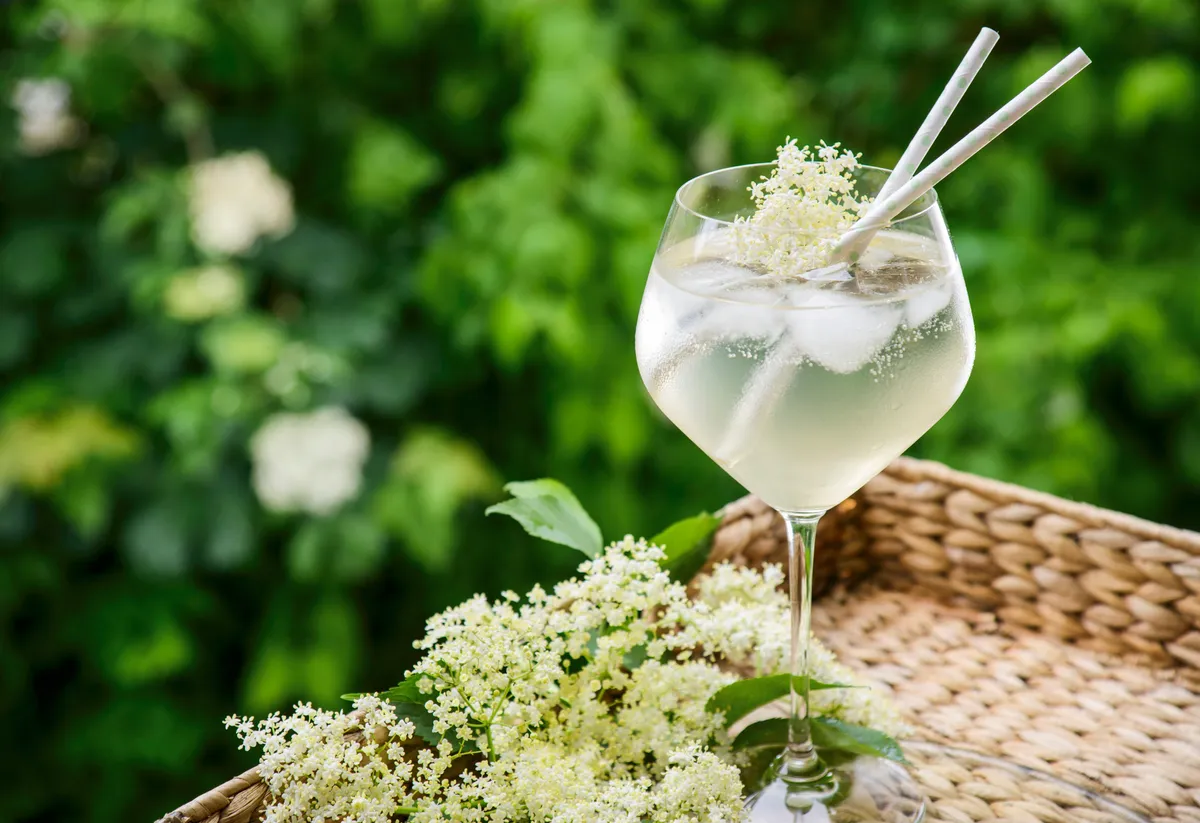
A final identity for elder is as a famed domestic medicine. John Evelyn in 1664 considered it a ‘catholicon’, or cure-all, and he found all parts of the plant useful.
In our times the bark and root are considered rather too purgative for everyday use, but the flowers taken as a tea encourage sweating and help break a fever. The flowers, as a tea, can also cut congestion and relieve respiratory infections and hay fever.
An entry from a Norfolk book of culinary recipes, 1739–79, advises: Elder flowers dry boiled in milk & drink it at night. It weill sweat & do much good.
The berries have a positive effect on the immune system and help reduce the severity and duration of winter sniffles.
How to forage for elderflower
The smell varies with exposure to direct sunlight: in open sun, it is attractively lemony, but in shade can be unpleasantly musky. Sniff before you pick! And don’t pick the flowers in wet weather.
Morning picking is a good rule. This might be hampered by elder’s thuggy colleagues, nettle and bramble, but because the panicles are large and readily snipped off at the base of the flowerhead (we use scissors rather than tear them), gathering a plentiful harvest can take just a few minutes.
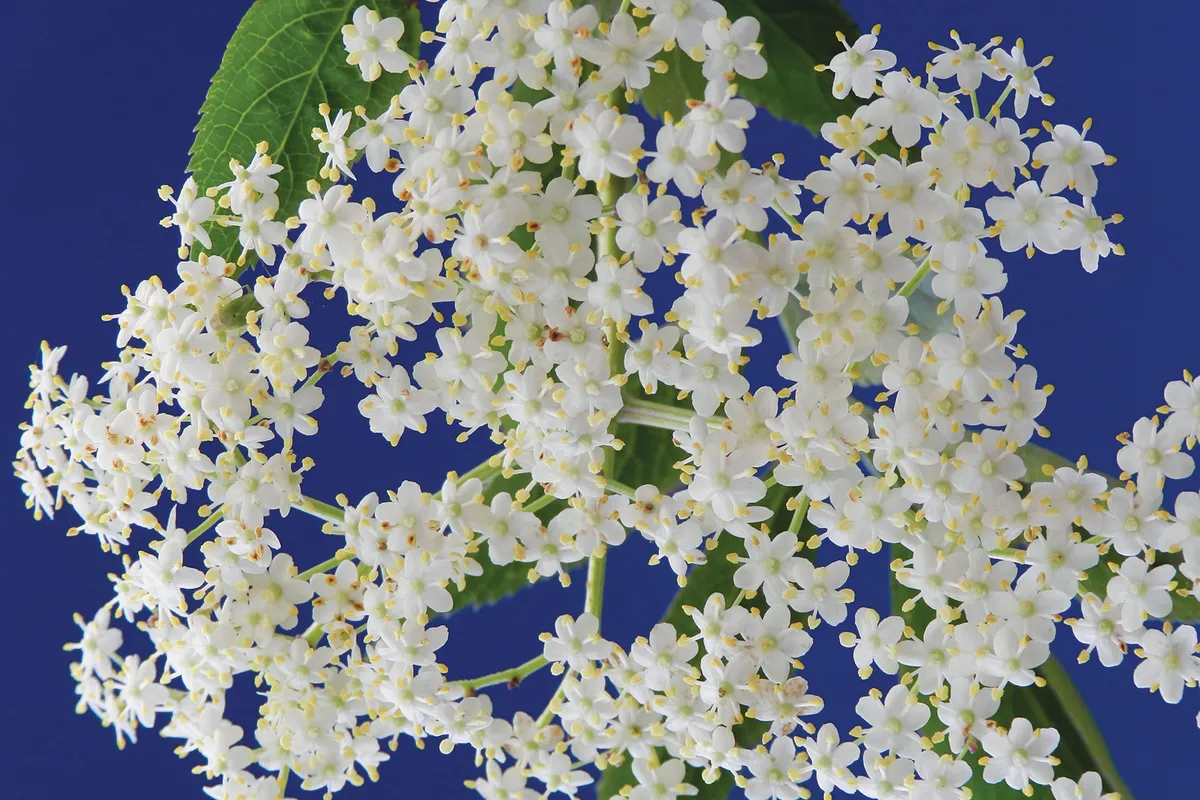
The flowering season, remember, is short, sometimes a couple of weeks. A guideline to optimum picking is to watch the pollinators: on a dry day, the more insects on the flowerheads, the nearer the peak of perfection they are.
A gentle distillation of elderflowers produces a sweet and heady water, while a cold infusion, leaving the flowers overnight to suffuse in filtered water, is equally delightful.
Elderflower water, made by either method, was once used like lavender or orange water to tone the complexion.
The flowers combine well with the flavours of gooseberry, raspberry strawberry and rose in a fruit salad.
The dried flowers retain their potency through until the following year and can be used as a tea.
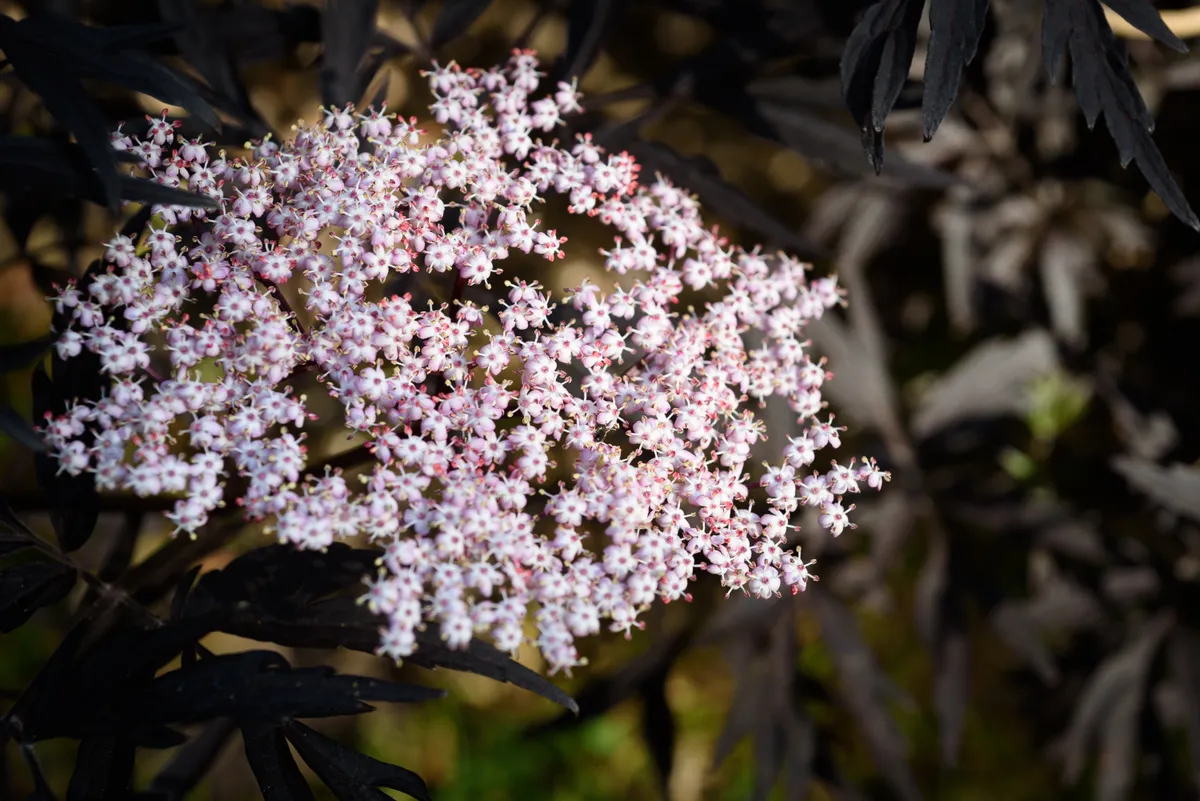
A variety of elder called ‘Black Lace’ produces light pink flowers and has much thinner and darker, almost black, foliage which turn red in autumn. The flowers and berries can be used in foraging recipes, the pink flowers of this variety result in a cordial with a pinkish hue.
How to forage for elderberries
The unripe berries make good capers, suggest the English forager John Rensten (2016) and US-based chef Pascal Baudar (2016).
The ripe berries are luscious and blend well with sweet spices and most fruits. They contain high vitamin C and blue anthocyanins, and make our preferred syrup for winter coughs.

The berries should not be eaten raw; heat them in your recipes, or filter out the seeds from the juice using a muslin bag. The raw seeds can cause tummy upsets or diarrhoea.
Gathering the bunches of berries is as straightforward as for the flowers. Some people strip the berries using the tines of a fork, or simply use your fingers. The juice colour washes off your hands easily.
The berries freeze well, or if for immediate gratification, they combine well with apple in baked puddings such as crumbles and pies. Or try an elderberry vinegar or spiced beans.
Elderflower and elderberry recipe ideas
How to make elderflower and rose cordial
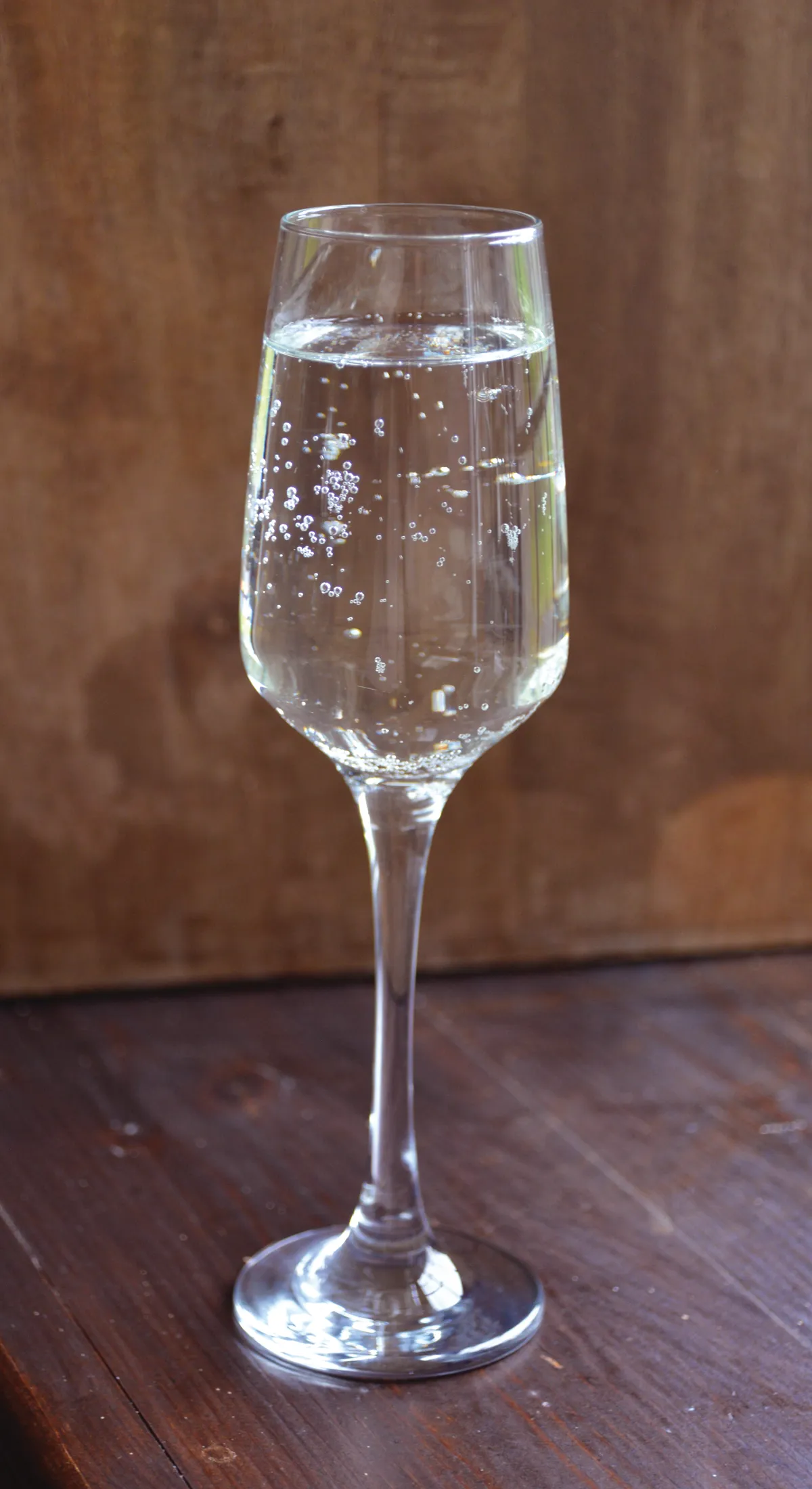
Elderflower cordial is delicious and a classic summer foraging drink to make, but it tastes even better with the addition of rose petals.
How to make elderflower and raspberry coulis
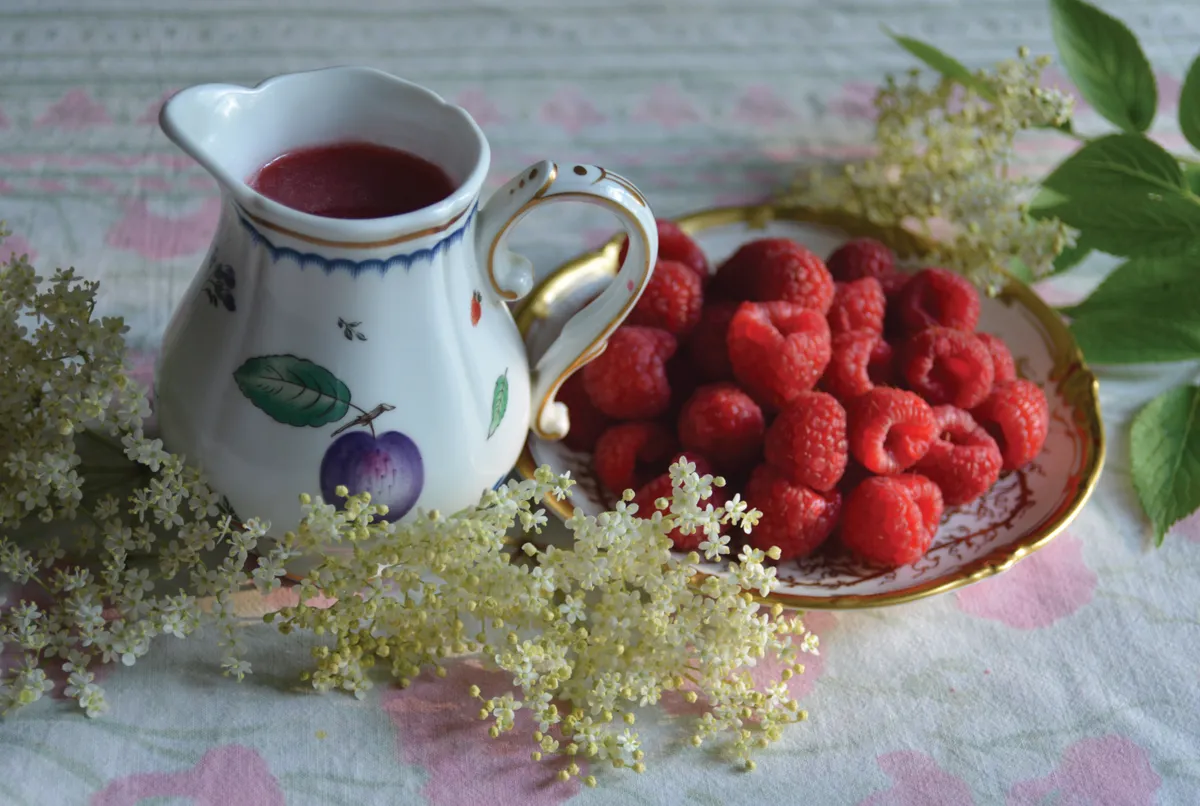
Elderflower and raspberry complement one another perfectly and the rose in the cordial makes it even more delicious.
How to make tasty elderflower shortbread

Learn a new way of using the elder tree to make something delicious with this elderflower shortbread recipe, by horticulturist David Hamilton.
How to make elderflower fritters
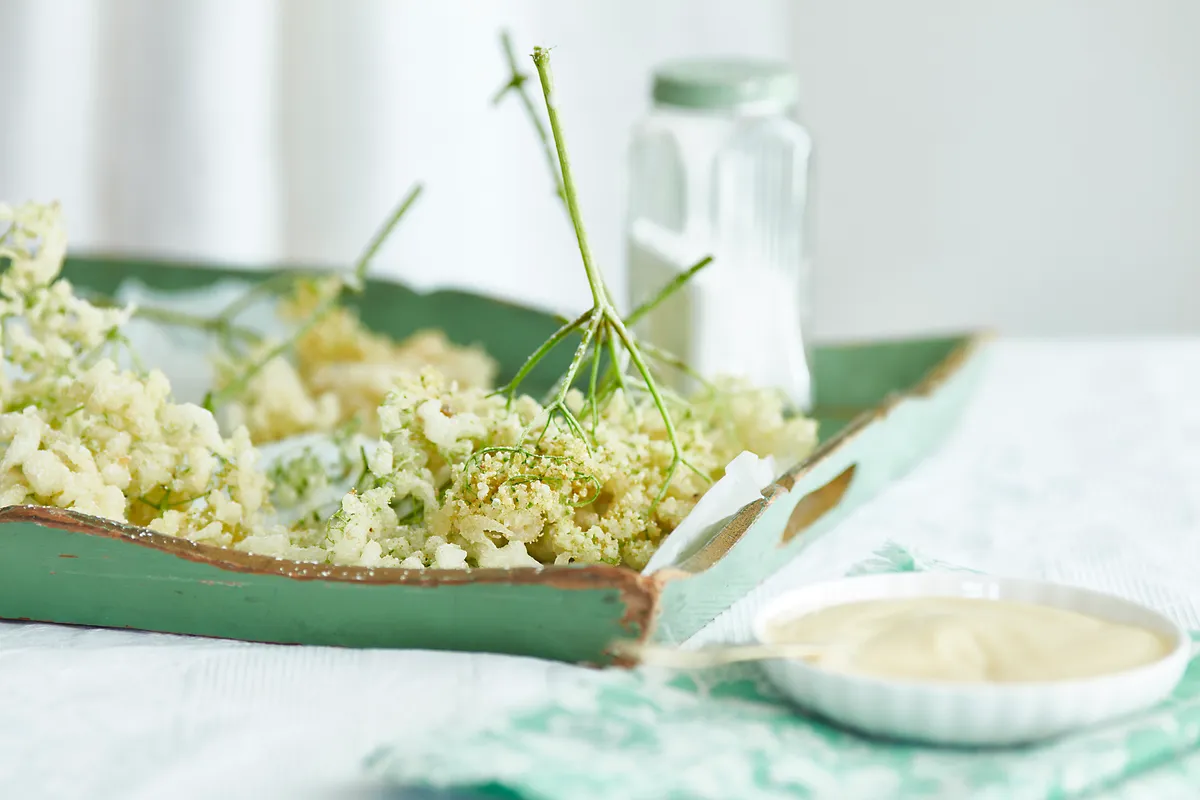
This fragrant treat makes a delicious dessert. Be sure to pluck the heads when the buds have just flowered for the best flavour.
How to make elderflower gin

Elderflower gin has a subtle flowery flavour, soft, sweet and refreshing. Lucy McRobert shares her recipe for making this summery drink.
How to make elderflower sorbet
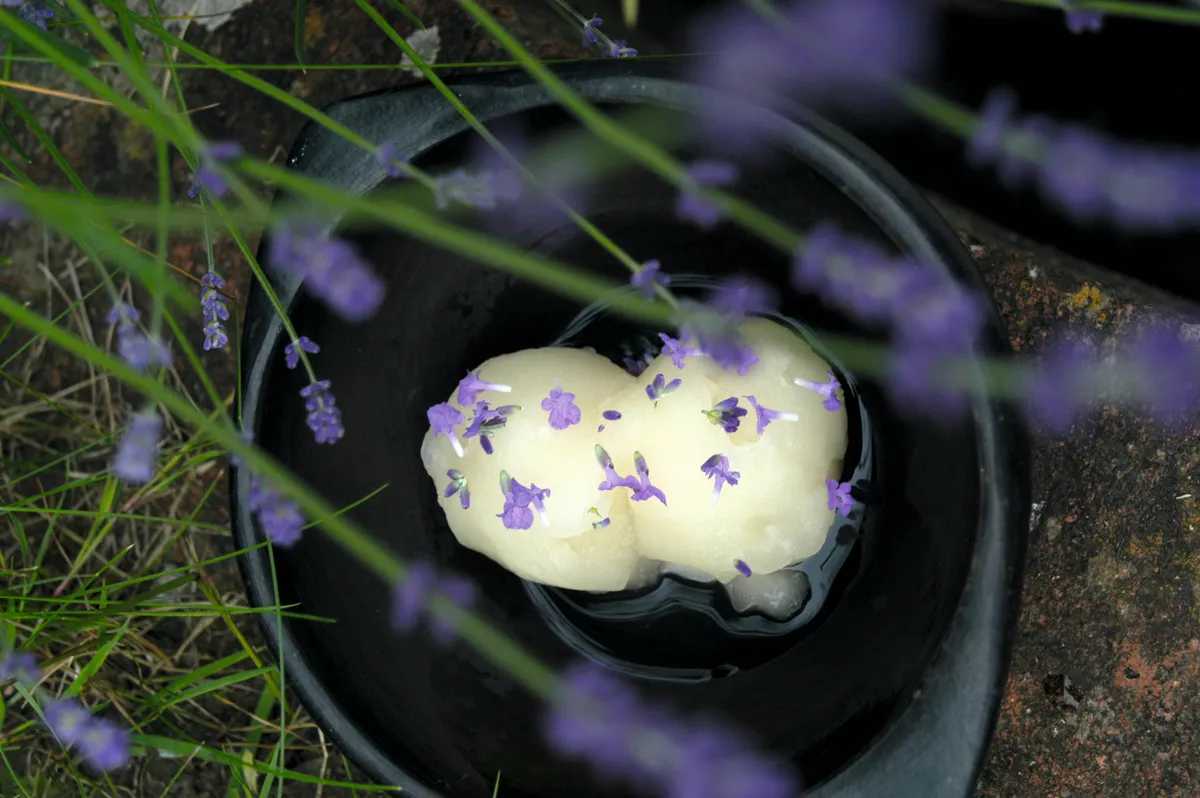
Elderflower is a popular ingredient in wines and cordials, but also makes a delicious, refreshing sorbet.
How to make elderflower and gooseberry jam
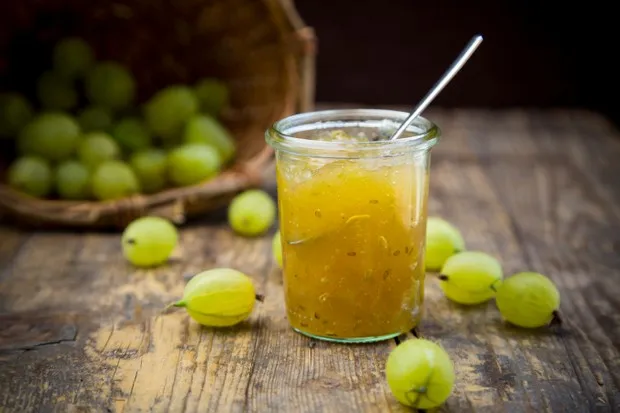
Make a tasty elderflower and gooseberry jam to enjoy summer flavours in the winter months, following this recipe on the BBC Countryfile Magazine website.
How to make spiced elderberry liqueur

Discover how to make a spiced elderberry liqueur with this recipe by author and gardener Stephanie Hafferty.
More recipes using berries:
How to make hedgerow ketchup
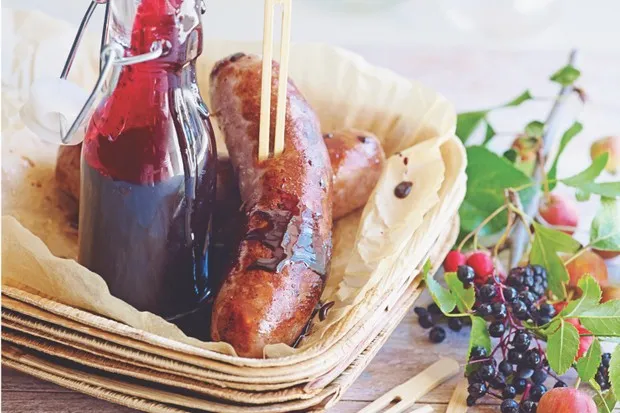
Make an easy hedgerow ketchup, which includes elderberries, blackberries and haws, as a tasty accompaniment to your late summer BBQ, following this recipe on the BBC Countryfile Magazine.
How to make elderberry wine
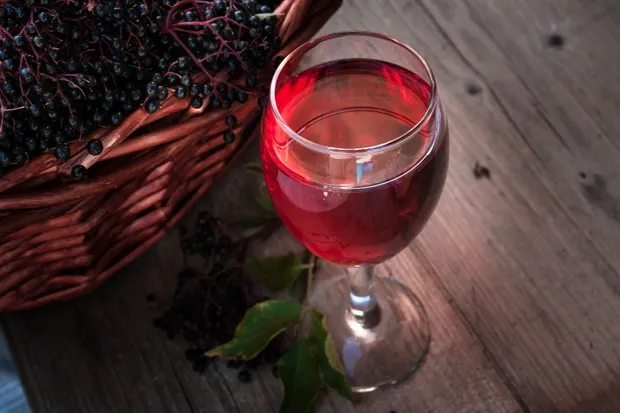
Try your hand at winemaking this autumn using one of the UK's most bountiful hedgerow fruits, using this recipe on the BBC Countryfile Magazine website.
This guide is an edited extract from Eat Your Weeds! by Julie Bruton-Seal and Matthew Seal., published by Merlin Unwin Books.

Main image: Elderflower in full bloom in Irthington, Cumbria, UK. © Stephen Dorey/Getty
